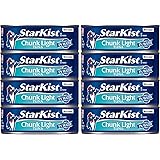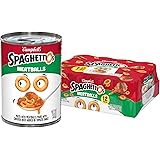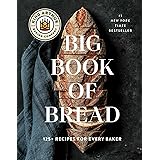The journey to becoming a proficient bartender or a skilled home mixologist truly begins with a strong foundation in classic cocktail recipes. As beautifully demonstrated in the video above, mastering a core repertoire of at least 50 essential drinks is not merely an expectation for professionals; it is a vital skill set for anyone passionate about crafting exceptional beverages.
This comprehensive guide is designed to complement the visual instructions provided, offering deeper insights into the world of essential cocktails. We delve into the historical significance, fundamental techniques, and critical ingredients that elevate these timeless concoctions from simple mixtures to revered liquid art forms. Understanding these core principles ensures that every drink, from a robust Old Fashioned to a vibrant Aperol Spritz, can be executed with precision and flair.
Mastering Classic Cocktail Recipes: The Bartender’s Foundation
Firstly, the importance of knowing classic cocktail recipes cannot be overstated. These foundational drinks, often referred to as “call drinks,” are those that any well-stocked bar is expected to produce consistently and expertly. For an aspiring bartender, this knowledge instills confidence and demonstrates competence behind the bar, reflecting a commitment to the craft. Secondly, for the home enthusiast, it provides the freedom to recreate beloved bar experiences and impress guests with a sophisticated array of beverages.
Thirdly, these recipes are the building blocks for countless variations and modern creations. By understanding the balance of sweet, sour, bitter, and spirit that defines a classic, one is then empowered to experiment successfully. The video highlights a selection of these fundamental drinks, each embodying specific techniques and ingredient combinations that are crucial to learn. This foundational knowledge is, therefore, paramount for anyone looking to excel in mixology.
Essential Bartending Techniques and Their Application
Crafting classic cocktail recipes involves more than just mixing ingredients; it requires mastering specific techniques that directly influence the drink’s texture, temperature, and dilution. Firstly, stirring is typically reserved for spirit-forward cocktails, such as the Old Fashioned or Manhattan, where the goal is to chill and dilute without aerating. This method is crucial for maintaining a smooth, silky mouthfeel and preserving the clarity of the spirits.
Secondly, shaking is employed for cocktails containing citrus, cream, or egg whites, like the Daiquiri or Margarita, to achieve thorough chilling, dilution, and a pleasant frothy texture. The rapid movement introduces air, emulsifying ingredients and creating a lighter, more vibrant drink. Thirdly, proper ice management, including using large ice rocks for stirring and fresh ice for shaking, is often overlooked but profoundly impacts the final product, preventing excessive dilution while maintaining optimal chill.
Understanding Cocktail Categories for Enhanced Mixology
Organizing classic cocktail recipes into categories can simplify the learning process and highlight shared characteristics. For instance, the video demonstrates several stirred classics that are built directly in the glass or a mixing glass. One, the Old Fashioned, a whiskey-based drink with bitters and sugar, represents a foundational structure for many spirit-forward libations. Two, the Manhattan, a close relative, introduces vermouth as a key modifier, adding depth and herbaceous notes.
Three, the Sazerac, another whiskey classic, distinguishes itself with an absinthe rinse and Peychaud’s Bitters, showcasing regional variations on a theme. Four, the Negroni, an equal-parts cocktail of gin, Campari, and sweet vermouth, is a testament to the beauty of simplicity and balance, revered for its bold, bittersweet profile. These examples underline how subtle changes in ingredients or preparation can lead to entirely distinct yet equally beloved drinks within the vast world of essential cocktails.
Beyond these, the world of sours, exemplified by the Daiquiri, Margarita, and Pisco Sour, represents another critical category. These drinks generally balance a spirit with fresh citrus juice and a sweetener. Moreover, longer, refreshing drinks like the Tom Collins or Gin Rickey often incorporate soda water, making them perfect for warmer climates or lighter palates. These variations allow for a diverse and exciting exploration of classic cocktail recipes, ensuring there is always a drink for every taste and occasion.
Key Spirits: The Heart of Classic Cocktail Recipes
At the core of virtually every classic cocktail recipe lies a specific spirit, which dictates the drink’s character and complexity. Understanding these base spirits is fundamental to advanced mixology. Firstly, gin, particularly London Dry Gin, is celebrated for its juniper-forward profile and botanical complexity, forming the backbone of iconic drinks like the Martini, Gin Rickey, and Negroni. Variations such as Old Tom Gin, a slightly sweeter style, are historically significant in cocktails like the Martinez, offering a glimpse into gin’s evolution.
Secondly, whiskey, primarily rye in many featured recipes, provides a spicy and robust foundation for drinks such as the Old Fashioned, Manhattan, and Sazerac. The unique characteristics of rye, with its peppery notes, distinguish it from the softer, sweeter profiles of bourbon. Thirdly, rum, especially Cuban-style white rum, is the soul of the Daiquiri and Hemingway Daiquiri, offering a smooth, subtly sweet base that perfectly complements citrus. These spirits are not merely ingredients; they are the vibrant personalities that define each essential cocktail.
Fourthly, tequila blanco brings an earthy, agave-driven complexity to cocktails like the Margarita and Paloma, contrasting beautifully with lime and other fruit notes. Lastly, vodka, while often perceived as neutral, forms the base of the Moscow Mule and the Vesper Martini, providing a clean canvas for other flavors to shine. The choice of spirit, from its origin to its distillation process, profoundly impacts the flavor profile of the final classic cocktail recipe, making thoughtful selection paramount for any discerning bartender.
A Glimpse into Cocktail History: Origins and Evolution
Exploring the origins of classic cocktail recipes adds a rich layer of appreciation to the art of mixology. The video touches on several fascinating historical notes, highlighting how many of these drinks are steeped in tradition and cultural significance. Firstly, the Champagne Cocktail, a simple yet elegant drink, made its debut in 1862 within Jerry Thomas’s “Bon Vivant’s Guide,” one of the earliest bartending manuals. This landmark publication helped codify cocktail making for future generations.
Secondly, the Aperol Spritz, a staple across Italy and beyond, was created in Venice around 1919, eventually becoming synonymous with Italian aperitivo culture. Its refreshing, bittersweet profile has made it a global phenomenon, demonstrating the enduring appeal of well-balanced drinks. Thirdly, the Americano, considered the precursor to the Negroni, was first served in Milan, Italy, in 1860 at Gaspare Campari’s bar. This historical lineage illustrates the evolutionary path of many essential cocktails, with new creations often building upon the foundations of older ones.
Fourthly, the French 75, with its intriguing name, emerged around 1915 at Harry’s American Bar in Paris, purportedly named after the formidable French 75mm light field gun used in World War I. This connection to a historical event adds a unique narrative to its vibrant, gin-based profile. Finally, the Moscow Mule, a classic that captured American tastes in the 1940s, originated in Los Angeles at the Cock ‘n’ Bull bar. Its signature copper mug is now an iconic part of its presentation, showcasing how presentation and historical context often intertwine in the world of classic cocktail recipes.
The Bamboo Cocktail, another low-ABV offering, is usually credited to bartender Louis Eppinger around 1902 in Yokohama, Japan, demonstrating the global reach of cocktail innovation. Meanwhile, the Whiskey Smash, first created in 1862 by the legendary Professor Jerry Thomas, highlights the enduring influence of one of modern bartending’s godfathers. These anecdotes underscore that each essential cocktail carries a story, enriching the drinking experience and connecting us to the past.
Beyond the Recipe: Elevating Your Home Bar
To truly master classic cocktail recipes, attention must be paid to details that extend beyond just mixing ingredients. Firstly, fresh, high-quality ingredients are paramount. This means using freshly squeezed citrus juices, rather than bottled alternatives, as their vibrant acidity is indispensable for balanced sours and refreshing highballs. Secondly, choosing premium spirits and liqueurs significantly impacts the depth of flavor; a better gin, for instance, will inherently lead to a better Martini.
Thirdly, understanding garnishes as more than mere decoration is crucial. A simple orange twist in an Old Fashioned not only adds visual appeal but also expresses aromatic oils that contribute to the cocktail’s overall sensory experience. Techniques such as expressing citrus oils or carefully placing cherries are essential skills for any aspiring mixologist. Fourthly, having the right glassware, such as the coupe for Manhattans or a copper mug for a Moscow Mule, enhances both presentation and the drinking experience, making each essential cocktail feel special.










